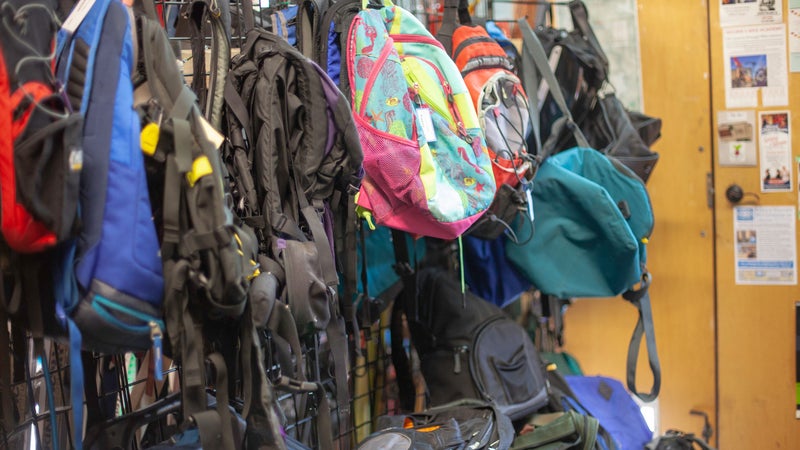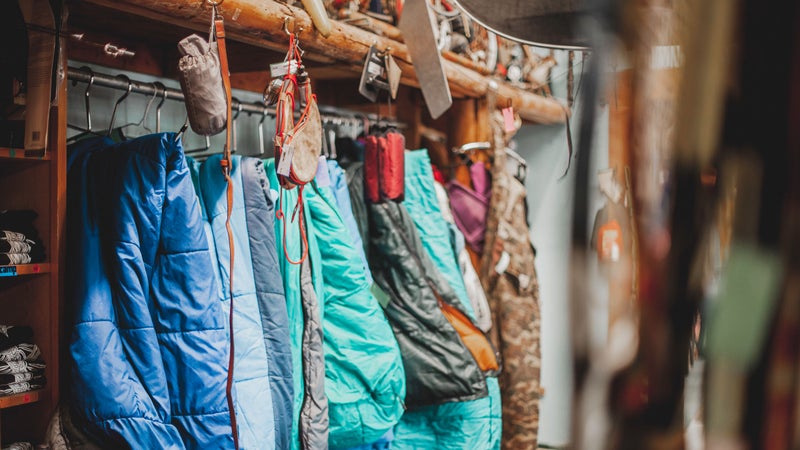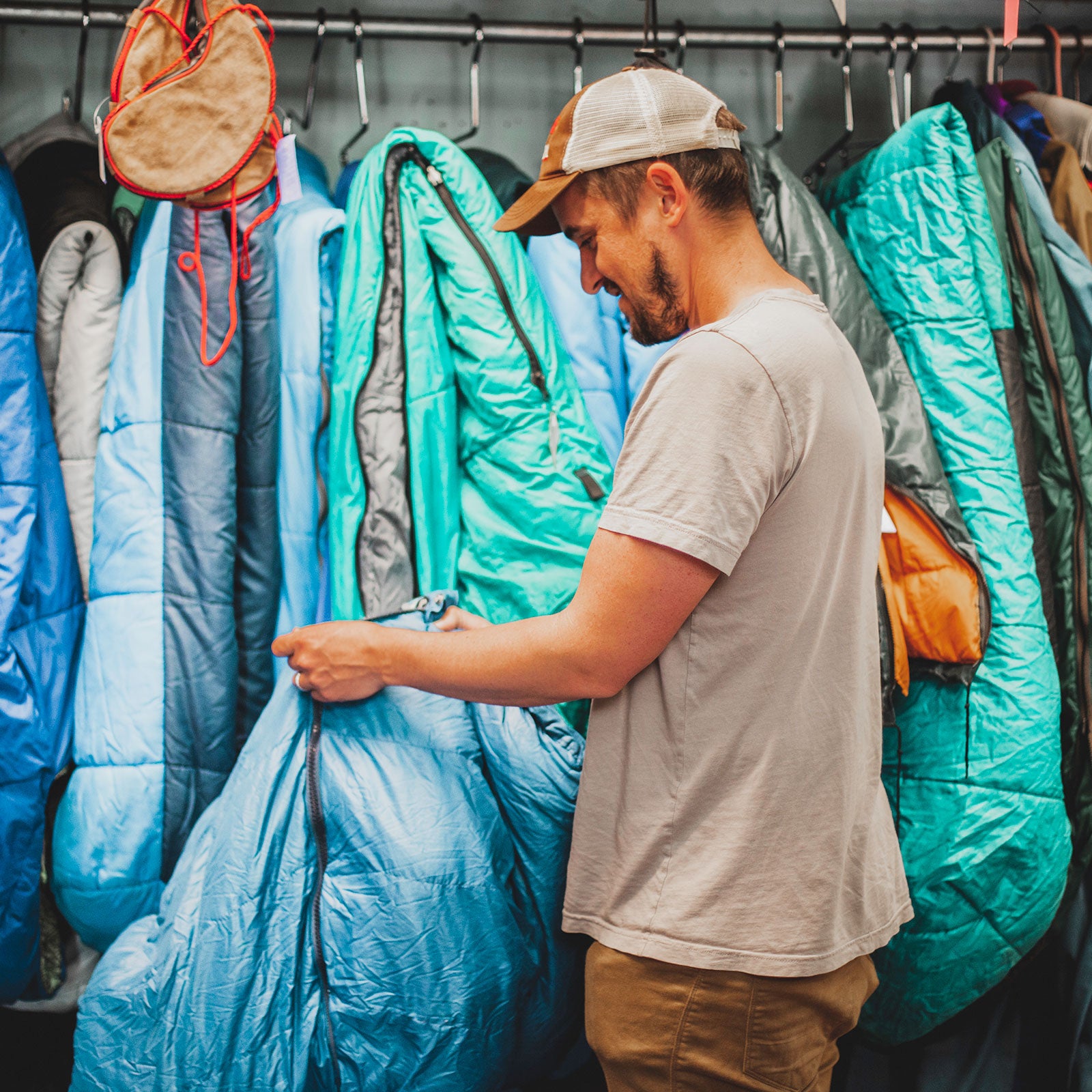Tearing open the packaging on a brand-new piece of gear is exciting, to be sure. But buying used is an excellent way to cut down on your carbon footprint and spare your bank account—if you’re careful. Keep an eye out for certain things to make sure what you’re purchasing still has some life and isn’t too “well loved.” I spoke with consignment-shop employees to glean their tips and best practices for navigating the used-gear minefield.
Don’t Overlook Footwear
“I can’t think of anything that loses value quicker,” says Matt Endress, manager at in Ashland, Oregon. “Even if a pair of shoes is pretty new, it immediately loses more than half its value.” That’s because many people are put off by gear that someone else has shoved their sweaty, stinky feet in, no matter how briefly. But if you can get past that and objectively determine the quality of the shoes, you can score some steep deals. Check the uppers and treads of hiking boots and road and trail runners, as they tend to clearly show wear and tear. And Endress advises looking inside the shoe, too. “A lot of times, people will take the insoles because they like them,” he says, “and you don’t want to buy shoes without insoles.”
Smell Everything
You read that right. If an item reeks enough to keep you from putting your face near it, you shouldn’t be buying it. And your sniffer can help catch the telltale whiff of mildew, which is game over for most waterproof gear. It can weaken fabrics and leave nasty stains. “You might not catch mildew just by looking at it,” Endress says.

Don’t Be Afraid of Small Tears or Dirt
“A lot of the stuff we see come through our stores and consignment is repairable or maybe just dirty,” Andrew Arredondo, retail buyer at in Salt Lake City, says. “You can get some really good deals on outerwear that’s just a little bit stained, and you can re-waterproof it with .” Endress adds that he’s seen tents that would be astronomically expensive (when new) go for cheap just because they needed a little patchwork and TLC. ($5) can easily fix a hole in a tent, jacket, or pack, no advanced sewing skills necessary.
And even if the previous owner says they washed it, go home and give it another scrub just to be safe. “That can do a lot of good in making a used product not feel gross to you,” Arredondo says. ($10) can help here, too.
Be Careful When Buying Products with Down
Brand-new down can’t be matched for its warmth-to-weight ratio, but all bets are off if it’s used. “Be very wary of anything down that’s packed in a stuffsack,” Endress says. Down in a sleeping bag or jacket that was stored that way or shoved in a tight closet for a long time could be too compressed to keep you warm. “The fill rating means nothing after a while,” he says. “If the jacket or bag is thick and lofty, it’s going to be warm.” A down jacket that’s thin and looks squished could have lost its warmth-trapping structure.

Bring Batteries and Canisters
“If you’re looking for a headlamp, bring your own batteries so you can test it and see if it works,” Endress says. And if you’re in the market for a camp stove, you’ll want to test it ahead of time, too. Alex Converse, manager of the used-gear shop in Bishop, California, says,��“A lot of gear stores don’t have tester fuel canisters, so bring one with you.” You often don’t know for sure if a camp stove will work until you fire it up yourself.
Check for Discoloration on Tent Poles
Even if all of a tent’s poles appear to be accounted for and in working order, look to see if they’re faded in spots—that often means a pole was under heavy stress and could snap as soon as it’s loaded in the field. “If the discoloration is really bad, there might have been a kink that was bent back into shape,” Converse says. “And that’s even worse than leaving it bent.”
Avoid Certain Things
Sometimes it’s not worth looking for a deal. Like with helmets. Level Nine won’t even accept used lids for resale. “You should never, ever, ever buy a used helmet, because you don’t know what it’s been through,” Arredondo says. “Helmets have a pretty short life span, even if they just sit in a box in the dark.” And with climbing gear specifically, stay away from soft goods. “You never know how long something has been sitting in the sun or was in someone’s garage getting motor oil or DEET spilled on it,” Converse says. “Just get a new harness.”
Follow Shops on Social Media
Like trendy thrift stores, Level Nine Sports and other consignment shops will often advertise discounts and sales on their Instagram and Facebook accounts.
Buy in Person Whenever You Can (Though There Are Some Reliable Websites)
It’s always best to see and touch gear before buying. That said, the gear on some brands’ resale sites—think the ,��,��and ’s used section—has been thoroughly inspected or even repaired beforehand. (Not the stuff on Craigslist, though; you’re liable to get hosed. “You really have to know the gear you’re buying, because it isn’t vetted by anyone, it’s just a third-party vendor,” Arredondo says.)


